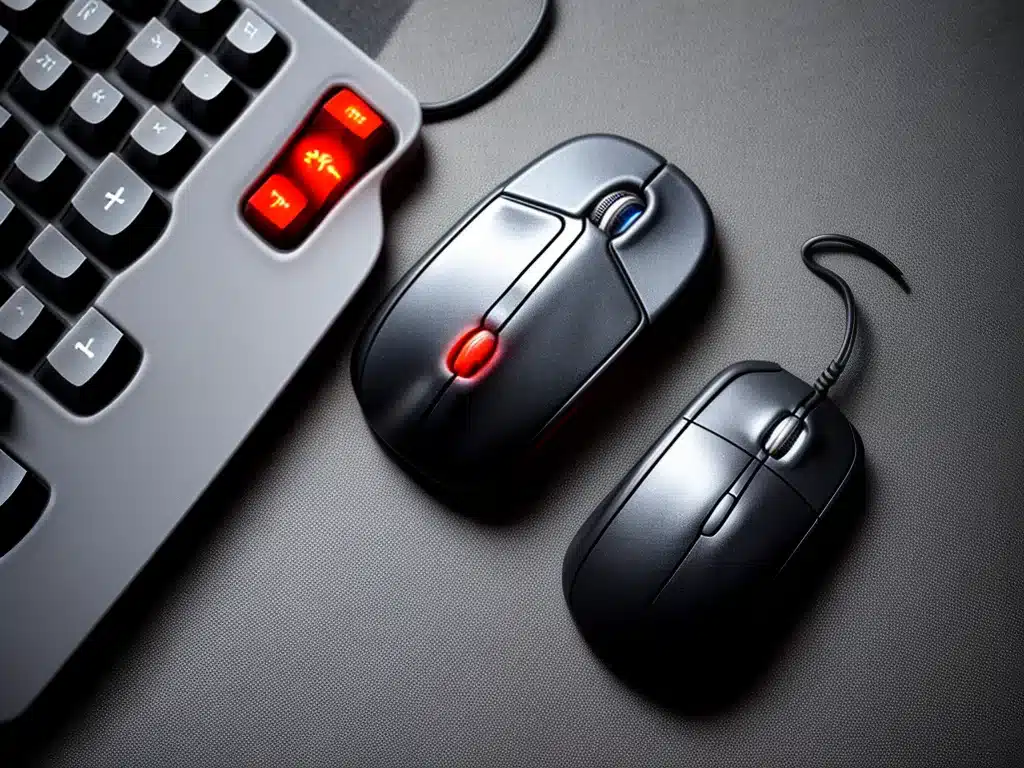
Having an unresponsive wireless mouse or keyboard can be frustrating. However, there are several things you can try to revive them before replacing the devices. Here are some tips for troubleshooting and fixing wireless mice and keyboards that stop working properly.
Check the Batteries
The first step is to check the batteries in the wireless device. Replace the batteries with new ones or try recharging if they are rechargeable. Weak or dead batteries are the most common reason wireless mice and keyboards become unresponsive.
Fresh batteries often restore functionality. Make sure to use the correct size and type of batteries recommended by the device manufacturer. An input device may behave erratically or not work at all if the wrong batteries are used.
Check for Interference
Wireless devices operate using radio signals. Interference from other devices can disrupt this signal and cause the mouse or keyboard to not communicate properly with the receiver.
Potential sources of interference include:
- Other wireless devices like Wi-Fi routers, Bluetooth gadgets, baby monitors, cordless phones, etc.
- Electrical appliances and motors
- Thick walls, metal surfaces, and physical obstructions between the device and receiver
Try moving the wireless mouse or keyboard closer to the receiver to improve the signal strength. Also, make sure the receiver is plugged directly into a USB port and not connected via a USB hub.
Reset the Wireless Connection
If new batteries and reducing interference do not restore functionality, try resetting the wireless connection. The steps vary by device, but usually involve:
- Pressing a connect or sync button on the receiver and wireless device
- Unplugging and re-inserting the receiver
- Removing and replacing the batteries
Refer to the manual for your specific wireless mouse or keyboard for reset instructions. Re-initiating the wireless connection often fixes unresponsive issues.
Update Drivers and Firmware
Outdated or corrupt drivers and firmware can prevent proper communication between a wireless device and computer.
Update to the latest drivers for the mouse, keyboard, and wireless receiver. Newer versions may fix bugs and improve connectivity.
Also, check the manufacturer’s website for firmware updates for the wireless device itself. New firmware helps optimize performance and compatibility.
Try a Different USB Port
Some USB ports on a computer can become damaged or collect dust and debris over time. Try connecting the wireless receiver to a different USB port on your computer.
Avoid plugging it into a USB hub and use a direct motherboard connection. USB 3.0 ports are preferred over USB 2.0 ports when available. Switching USB ports can resolve connectivity issues in some cases.
Check the Sensor and Clean if Needed
For a wireless mouse that stops responding to movement, inspect the sensor on the bottom. Look for any dust, dirt or hair obstructing the LED light. Carefully clean the sensor area with a cotton swab dipped in rubbing alcohol.
Also wipe the mouse surface you are using to remove any particles that could interfere with the optical or laser tracking. A clean sensor ensures proper cursor control.
Test with the Wired Connection
Some wireless mice and keyboards can connect directly to a computer via USB cable. If possible, plug in the device wired and see if it works normally.
Proper functionality when directly connected indicates a wireless specific problem rather than a broader internal issue. Try the wireless reset steps again once wired operation is confirmed.
Consider Replacement if Needed
If you have exhausted all other troubleshooting methods, the wireless device may need replacement. Some connectivity issues cannot be fixed if the internal hardware has failed.
Consider purchasing the same or a newer model mouse or keyboard if the original cannot be revived. Research product reviews and choose a replacement with robust wireless connectivity.
With some diligent testing and troubleshooting, an unresponsive wireless mouse or keyboard can often be brought back to normal operation. But if all else fails, replacement is the final option to restore wireless functionality.












